QuestionQUESTION: Hi
I have a male buck who is banded (black and white)
what coat color would the offspring be if the female is albino(pink eyed white)?
ANSWER: Hi Joseph,
That's a special buck! It might be worth it to look around for local breeders who may be able to find you a banded female, rather than risking messing up that trait. The problem with breeding albino mice to colored ones is that albino could be masking ANY other color or pattern, so there's just no telling what the offspring could look like. Albinism is written as c/c, meaning it's recessive and on the c-locus. Non-albino mice are usually C/*, meaning they have at least one "full color" gene. Therefore, the offspring would be C/c, carrying an invisible albino gene, that would almost certainly make things frustrating for you down the road (as recessive genes are very difficult to breed out later on, since they hide under the dominant ones). The albino mouse could be masking solid coloration or spotted, red, blue, chocolate, dove, just about anything, so unless you're working on an albino line it's really only a useful addition if the albino doe is masking something you need, has an amazing quality you want to breed in (great temperament, mothering skills, size, conformation, etc.), or if you're working with other c-dilutes (other variations of the gene that don't mask albino, such as himilayan, for instance).
If there is a reason you really want her bred to the banded, see if you can find out something about her other genes. Do you know where her parents came from, or anything about her siblings? Is she on the chunky side? Red mice (dominant yellow) have a tendency to be overweight, whereas black mice have a tendency to be small in stature, so her size might give you some hints. If you can't deduce anything, you can try a test breeding first (by mating her with a mouse whose genetics you know a lot about) or just breeding her with the black banded and seeing what she throws. If you don't get favorable offspring, just don't use them for your breeding program and try to find another doe. You can use the information here to try and do a little puzzling out once pups do come along, from whoever you decide on breeding:
Mouse Color Genetics: http://www.hiiret.fi/eng/breeding/genetics/index.html
Mouse Color Varieties (with the genotypes explained): http://www.hiiret.fi/eng/breeding/varieties/index.html
Welcome to the wonderful world of mouse breeding, and let me know if you have any other questions! :)
-Tam
---------- FOLLOW-UP ----------
QUESTION: Thank you for your reply it was helpful
Do you think there is a chance that among the offspring there would be a non-albino female since the father was banded black and white? What if I use that female in time after 6 weeks and mate it with another buck who is not albino. Is this possible?
AnswerNo problem! I'm here to help. :)
Definitely check out the links I included, as they explain this a little better than I can. All of the offspring of a colored mouse with an albino mouse will *appear* to be full colored, but will be carrying an albino gene. You can definitely mate the female colored offspring back to a colored buck in the future, but the albino gene will still be present and an annoyance for unknowable future generations, so there isn't a whole lot of reason to breed in albino unless for the reasons I mentioned previously. You are of course welcome to experiment! I recommend checking out these two forums to read about other people's breeding experiences and genetic trial-and-error:
http://mouselovers.com/
http://fancymicebreeders.com/
Just a heads up, though, females should absolutely not be bred until full grown (12 weeks). An absolute minimum would be 8 weeks, but you'll notice they are still quite small at that age, and the risks of birthing complications and health problems are much higher before they are full size (risking the loss of perfectly quality breeding stock and her offspring). Males can be mated as soon as they are old enough to want to, but since females need to carry the litter and then care for it, 6 weeks is much, much too soon.
Hope I helped!
-Tam

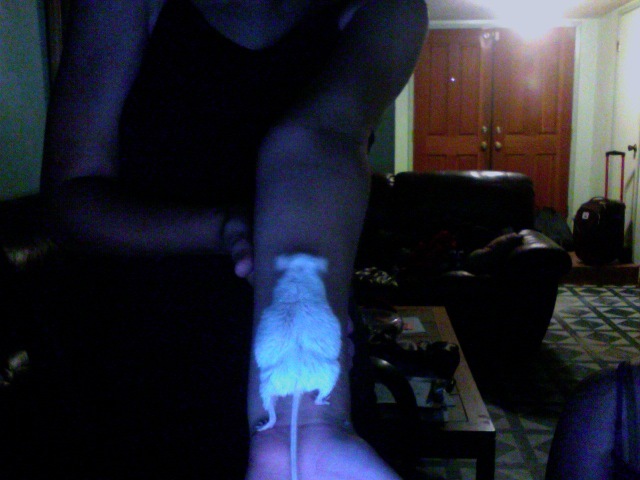 Pregnant mouse??
Question
My possibly pregnant m
Well I have 3 mi
Pregnant mouse??
Question
My possibly pregnant m
Well I have 3 mi
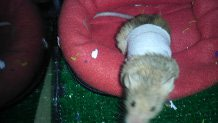 Treating self-eating mouse
QuestionQUESTION: Hi Natasha,
Thank you for all of your
Treating self-eating mouse
QuestionQUESTION: Hi Natasha,
Thank you for all of your
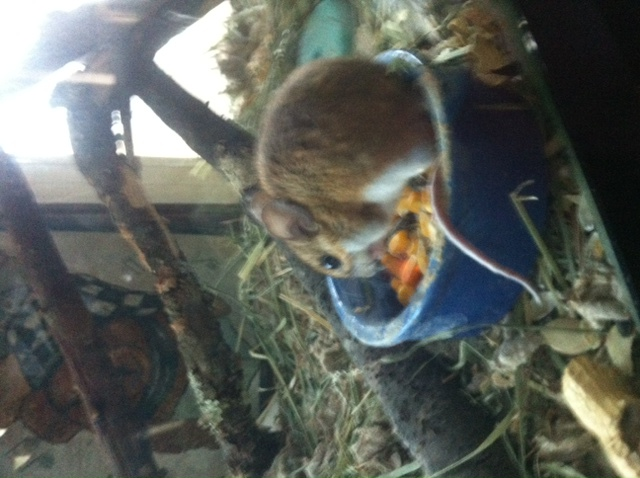 Fat Pet Field Mouse
QuestionReggie
QUESTION: Help!
&nb
Fat Pet Field Mouse
QuestionReggie
QUESTION: Help!
&nb
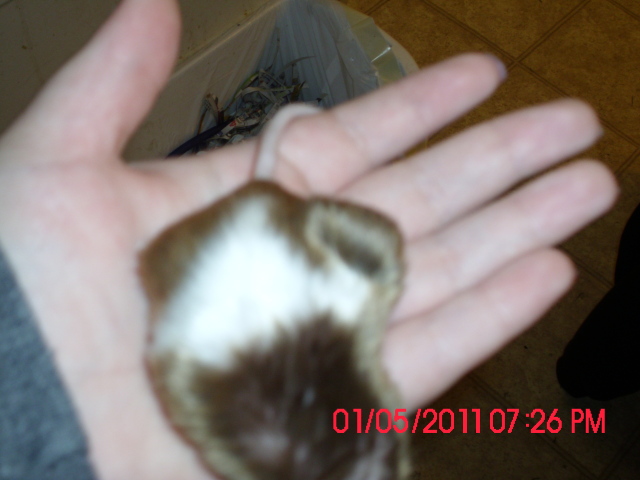 weird bump on mouse
QuestionCaramels leg
QUESTION: My oldest mouse h
weird bump on mouse
QuestionCaramels leg
QUESTION: My oldest mouse h
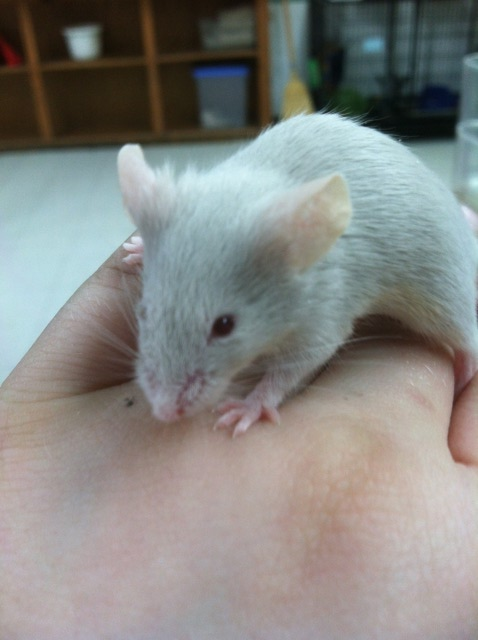 Pet baby mouse too young?
Question
Mouse
Hi, someone just gave me a baby m
Pet baby mouse too young?
Question
Mouse
Hi, someone just gave me a baby m